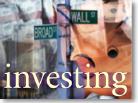|
Put more life in your fund
|
 |
February 8, 1999: 9:59 a.m. ET
Life-cycle mutual funds try to offer a more personal approach to your investing
|
NEW YORK (CNNfn) - Your life's goals and your investment goals are inevitably linked and a relatively new type of mutual fund is trying to make the process easier for you.
They're known collectively as life-cycle mutual funds, although many investment firms have come up with various monikers to set themselves apart. The idea is to give you a single fund, which matches your individual goals, while taking your personal threshold for investment risk into account.
Life-cycle funds, many of which were created within the last five years, try to solve many of the problems facing investors. While they accomplish some of their goals, they create other problems.
Measuring risk
Investment firms which offer life-cycle funds tout them as a flexible way for people to invest, but your choices are limited in certain ways.
Ideally, a firm with life-cycle funds would provide you with an interview with a broker. During this time, you would discuss your investment goals and the amount of risk you're willing to take on in the stock market.
Then, based upon your answers, the fund company would come up with a fund suited to your needs.
But, in reality, the match is often less than perfect.

This is because although a company may say its life cycle funds have something for everyone, it is - in most cases - merely offering you a limited number of funds, each of which is "pre-mixed" to a general investment approach.
For example, T. Rowe Price offers three versions of life cycle funds under the "Personal Strategy" moniker.
Assume you're a 25-year old single person who's willing to take a fairly aggressive approach to your retirement saving.
You'll probably be advised to choose their Personal Strategy Growth Fund (TRSGX), an aggressive growth fund with between 70 percent and 90 percent of its holdings in stocks, with the rest in bonds and money market securities.
The Growth Fund, however, might not have the variety of stocks you want, though and the other life-cycle funds you have to choose from are the Personal Strategy Balanced fund (TRPBX), with 50-70 percent of its holdings in stocks, and the Personal Strategy Income fund (PRSIX), which has 50-70 percent of its holdings in bonds and money market securities.
"They're generic," said Kevin McDevitt, mutual fund analyst at Morningstar, Inc. "The odds are you won't get exactly what you're looking for."
Adjusting your focus
Steven Norwitz, vice president at T. Rowe Price disagreed the life-cycle funds are "one size fits all." In fact, he said these types of funds actually make it easier for investors to have a well-rounded portfolio.
Many mutual funds invest in one particular sector or size of stock. For instance, a fund may invest exclusively in technology stocks or in small-cap securities.
Norwitz explained life-cycle funds offer you the stock diversification of multiple funds all in one mutual fund.
In the case of T. Rowe Price's Personal Strategy Growth fund, for example, you would hold not only stocks but bonds and money market securities as well.
Other investors, however, might have to buy a stock fund, a bond fund and a money market fund to get the same amount of diversity.
"The first question in investing is asset allocation," said Price's Norwitz. "This gets people focused on the right step from the beginning."
'A great place to start'
With life-cycle funds, said Norwitz, people are less likely to go looking for the one more narrowly-focused fund with a higher recent return and, instead, think about how they want their investment dollars allocated.
From the outset, life-cycle investors will be presented with questions about what risks they want to take and what percentage of their money they want to be geared toward each area.
"These make it very easy to invest," said Norwitz. "People make investing more complicated than it needs to be. You're probably no better off picking individual funds than going with this one fund."
Morningstar's McDevitt agrees. "If you're a less sophisticated investor, they are a great place to start," adding that later on you can move up to making more of your own investment choices with multiple funds.
Life-cycle funds also have another advantage. Most life-cycle funds keep their asset weightings at a relatively constant level.
Whereas another type of fund, say a small-cap fund, may have 50 percent tech holdings at one point and, during an Internet rally, maybe 80 percent, life-cycle funds try to maintain their holdings within a 10 percent range of their specified goals.
Life-cycle funds don't, in general, charge more for giving you a diversified portfolio but it is worth keeping an eye on the fund's fees and other expenses.
If a life-cycle fund operates as a "fund of funds" -- meaning it is investing in other funds -- then you may be charged expenses from the funds its holds.
However, these costs should be delineated in the prospectus for your life-cycle fund. If you're not certain about the costs, make sure you have your broker or other investment professional explain them to you to your satisfaction.
-- by staff writer Randall J. Schultz
|
|
|
|
|
 |

|

